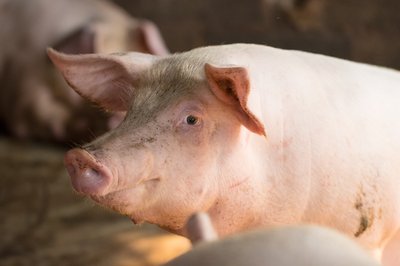Animal welfare - a question of feeding

In the public discussion, the term animal welfare is strongly linked to the topic of husbandry. But above all, feeding plays a central role with regards to animal wellbeing and behaviour. Feeding dietary fibre plays a major role in this context. What contribution can the right fibre strategy make to increase "animal welfare" in the pig sector?
The influence of feeding on animal welfare is gaining more and more attention in the course of the animal welfare discussion. The term "animal welfare" is not clearly defined, but animal health plays a central role in this topic. Since about 70% of the immune reactions take place in the digestive tract, a healthy digestive tract and a functioning digestion are indispensable.
With regard to animal welfare, the German Animal Welfare Regulation prescribes a minimum fibre content of 8% per kg DM in the gestation phase. Furthermore, it is imperative that fibre is not equal to fibre and the crude fibre content alone does not allow any conclusion on functionality. A high quality fibre source can positively influence several parameters:
- Satiety: Insoluble fibre components have a positive influence on intestinal peristalsis. Fermentable fibre components can be converted to short-chain fatty acids in the large intestine and therefore ensure faster satiety.
- Shorter farrowing time: the energy gained from the fermentation in the large intestine keeps blood glucose levels constant and helps the sow speed up the farrowing process. More vital piglets and fewer stillbirths are the result.
- Avoiding stress: A constant blood glucose level prevents the increased release of the stress hormone cortisol. The animals become calmer and are less aggressive.
As an insoluble and fermentable fibre source, OptiCell® can make a valuable contribution to the topic of "animal welfare".

